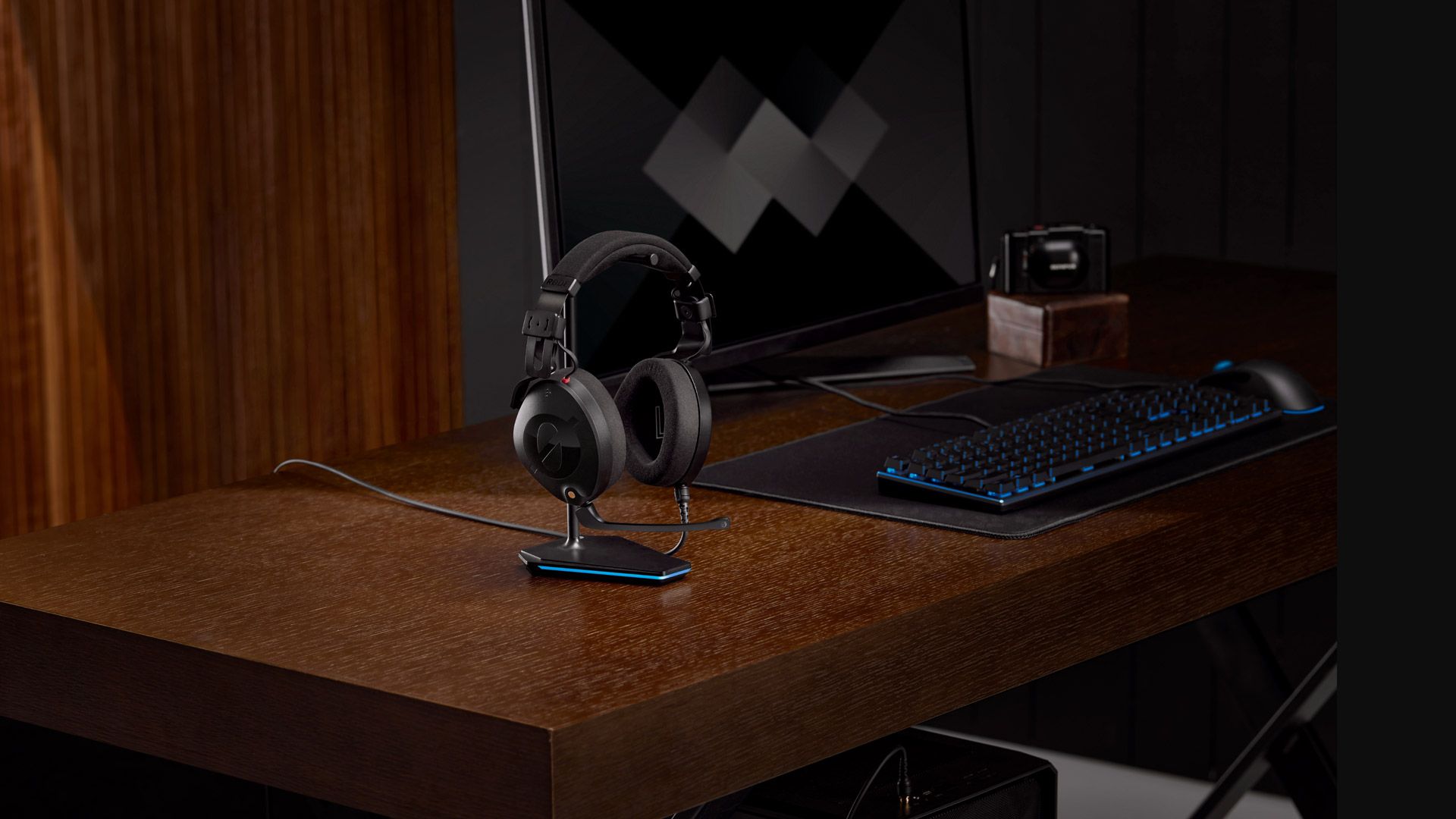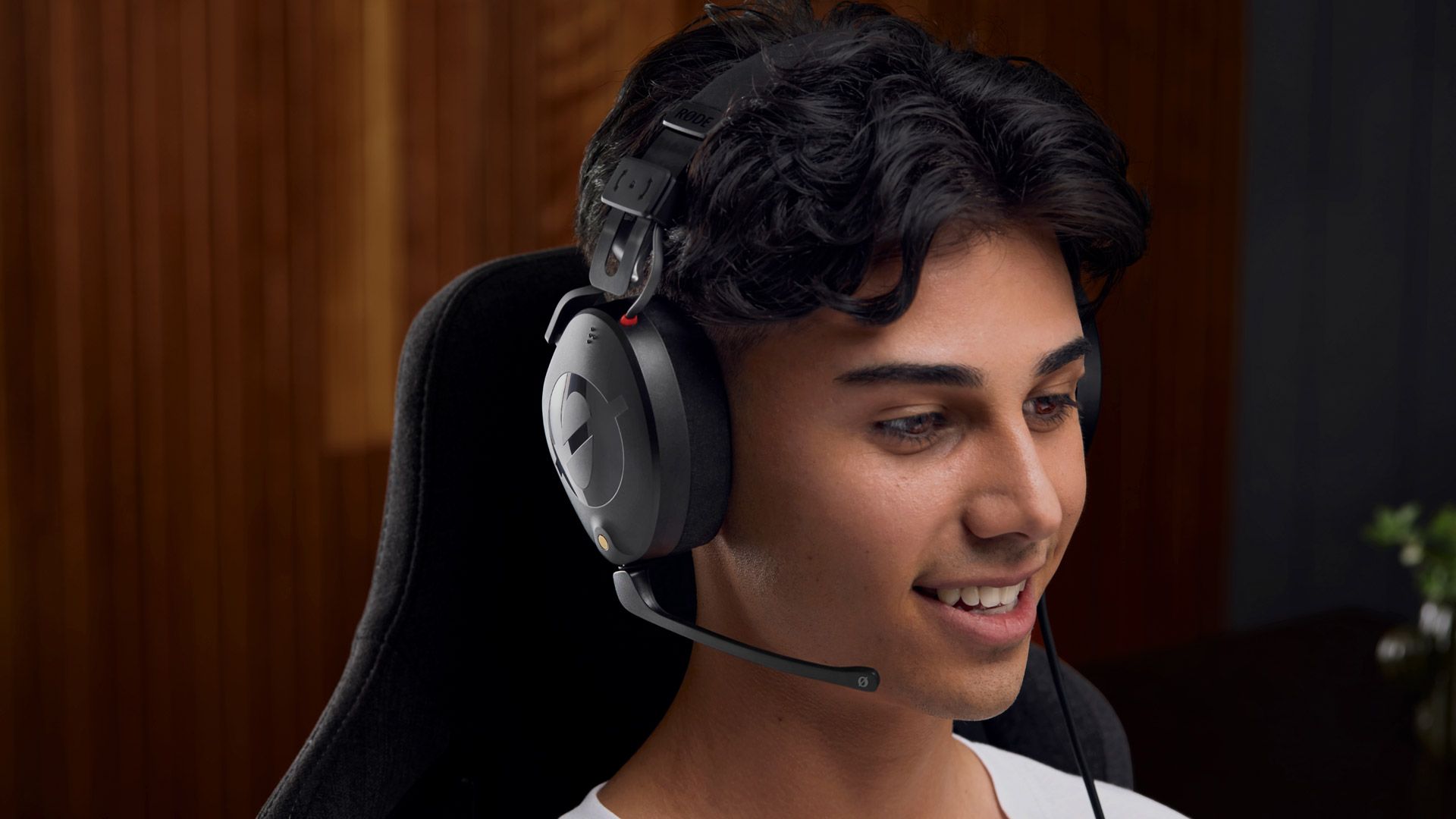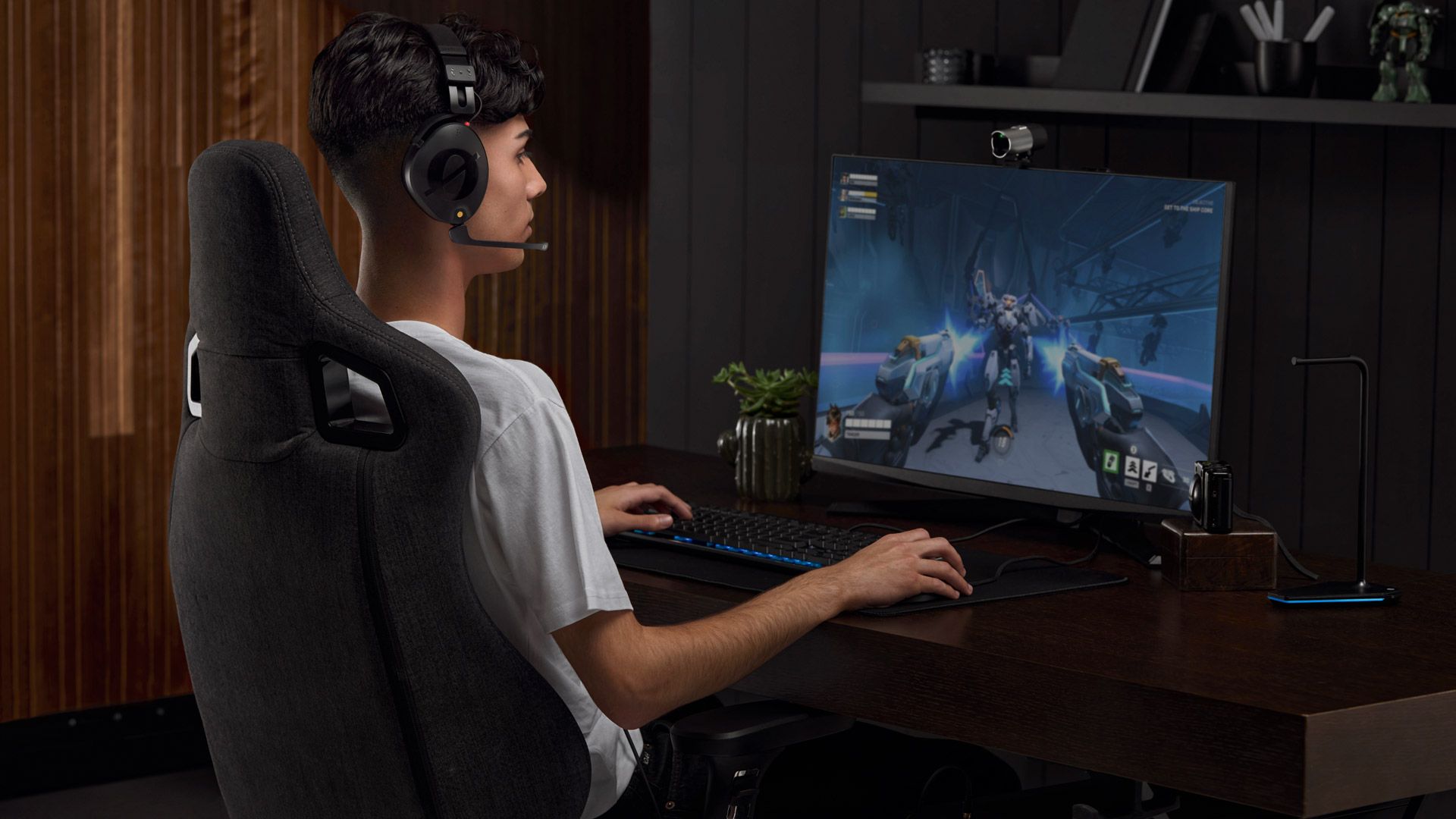
Gaming headsets come and go, but when it comes to content creation, they don’t have the best reputation. Often, they’re tuned for cinematic bass or amplifying footsteps, which is great for games but terrible when you’re producing a podcast or YouTube video. RODE is out to change that with its new NTH-100M headset.
Coming in at $189, these headphones balance exceptional sound quality with a neutral tuning and a high quality microphone. For pure gaming, they’re a bit expensive but strike a great middle ground if you’re also creating your own content.
Specifications
- Current Price: $189 (Sweetwater)
- Transducer Size (millimeters): 40
- Operating Principle
- NTH-100 – Dynamic
- NTH-Mic – Permanently polarized
- Active ElectronicsJFET impedance converter
- Polar Pattern: Omnidirectional
- Frequency Response
- NTH-100 – 5Hz – 35Khz
- NTH-Mic – 20Hz – 20kHz
- Signal-to-Noise Ratio: 67dB
- Equivalent Noise Level (A-Weighted): 27dBA Typical
- Maximum SPL: 106dB SPL RMS (Plug-In Power, 1% THD) 123dB SPL RMS (Plug-In Power, 10% THD)
- Maximum Output Level: 307mV (@ 1kHz, 10% THD into 1KΩ load)
- Impedance: 32Ω
- Sensitivity
- NTH-100 – 110dB/V
- NTH-Mic – 38dB re 1 Volt/Pascal (12.59 mV @ 94 dB SPL) +/- 3 dB @ 1kHz
- Maximum Input Power: 1700mW, 1% THD @ 1kHz
- Ear Coupling: Circumaural
- Ambient Noise Attenuation: 20dBA
- Connection Type
- NTH-100 – Dual TRRS Cable Attachments
- NTH-Mic – 3.5mm bayonet jack (for NTH-100)
- Dynamic Range: 92dB @ max input
- Weight
- NTH-100 – 350 grams
- NTH-Mic – 5 grams
RODE NTH-100M – What Is It?
The RODE NTH-100M is a new wired headset from RODE, creator of some of the most popular content creation tools on the market today. In truth, the NTH-100M isn’t exactly new. Its original NTH-100 headphones launched in the Spring of last year and were the company’s first entry into the headphone world. They were well received, and critics largely applauded the construction, comfort, and sound quality that, as TechRadar put it, was “more fun than other monitoring headphones we’ve heard.” Having used the original NTH-100 for months, I can echo that completely: they’re well-tuned for both gaming and more creative work, like video editing.
The NTH-100M is the same pair of headphones but has a microphone attachment. One of the neat things about the headphones is that they allow you to plug the wire in on either side. That same versatility means that transforming into a gaming headset is surprisingly easy.

Since we haven’t looked at the original NTH-100 yet, let’s start there. The headphones immediately make a positive impression. Taking them out of the box, they have a surprising weight (which was initially concerning but doesn’t turn out to be an issue). Taking a closer look, you can see that RODE put a lot of care into their design, and that they’re made to stand the test of time and heavy daily use. If its marketing material is anything to go by, these headphones are made for everyone from gamers to camera operators. They’re made to stand up to the rigors of run-and-gun videography; gaming at a desk is almost trivial in comparison.
Upon close examination, you’ll find that they’re reinforced in all the right places. The headband is made of flexible metal to prevent cracking. The yokes and pivots are also metal, so you don’t have to worry about untimely breakage there either. The earcups are made of durable feeling plastic. The cable is detachable, replaceable, and connects to either ear cup using a recessed lock. It can’t be pulled out by accident, and the internal lock means that accidentally torquing it in a way that would cause damage is incredibly unlikely.

Even the adjustment-band band on the top is engineered for reliability and longevity, using a rotating FitLok system that prevents accidental adjustments. This same system makes on-the-fly adjustments more difficult but once it’s set, you don’t really have to adjust it again, so it’s not a big deal.
Comfort is also a priority with these earphones. They use thick memory foam ear cushions infused with cooling gel. They’re trimmed in breathable Alcantara, which is a high-quality, supple fabric popular in high-end cars. As closed-back headphones, they do get a bit warm but were still usable throughout summer without making my ears sweat like leather-trimmed pads.

Inside that robust chassis, the NTH-100M is outfitted with a pair of custom-matched 40mm neodymium drivers. The drivers use Mylar for the diaphragm material, which is stiff yet lightweight, allowing for fast movement. That’s an important characteristic, as the speed of the driver plays a direct role in the quality and accuracy of its bass, as well as its ability to reveal details throughout the upper registers.
The big addition, then, and the reason for the “M” at the end of the name, is the new detachable microphone. It’s slimline and barely visible in your field of view and produces a crisp, clear sound that’s perfect for chatting with friends or guesting on a podcast. It’s not perfect, which I’ll discuss more in the following section, but works well and adds even more versatility to the NTH-100.
RODE NTH-100M – Performance
The NTH-100M is a unique product for me in that I’ve been able to spend a very long time with the base headphones ahead of writing this review. I first received the NTH-100 more than six months ago and it has been my go-to pair of headphones for editing videos since. Since they’re right there and always ready to go, I also use these headphones for gaming regularly. They’ve been a very good choice no matter what time of work or entertainment I was enjoying at the time.
The first thing to note about these headphones is that they’re very comfortable and you can easily wear them for hours at a time. On paper, they’re fairly heavy at 350 grams (355g with the mic attached), but distribute their weight well. It uses a standard cushioned headband, the exact type that would usually cause hot-spotting for me, but they’re grippy enough that the full weight doesn’t rest on your head and is shared with the clamping pressure around your ears.
They are on the tighter side — tighter but not tight. Compared to most over-ear headphones designed for music, there’s definitely more clamping force, but I didn’t find them uncomfortable at any point, even after 6+ hours at the PC. The memory foam cushions do a good job of balancing out that clamp force while also creating a good seal around the ear.

When it comes to comfort, the RODE NTH-100M pulls off an impeccable balancing act. It’s important for content creation headphones to isolate you from the outself world (a boon for gaming too), but they don’t overdo it. They just work: isolating yet comfortable, robust yet don’t feel heavy on the head.
That balancing act also applies to their sound quality. Any professional monitoring headphone, which these are certainly aimed at also, needs to be neutral and not color the sound. At the same time, these are headphones that you should also be able to use for gaming and music, so they can’t sound bland either.
What RODE has delivered here walks that thin middle road between balance and fun. They have a bit more bass, which makes music and games sound full. They have a bit more treble energy to reveal details and nuances in your listening experience, but aren’t sharp or sibilant. They’re not the headphones to turn to for bombast, but they certainly fit the bill if you want to have a fun listening experience that doesn’t feel like it’s working extra hard to pull it off.
Just as importantly, across the many videos I’ve edited with these, I’ve never once felt like they missed the mark for the audio mix. I can adjust levels and EQ on these and trust that when I listen on another PC, the audio track is going to sound the same. I absolutely cannot say that for many of my favorite audiophile-explicit headphones.
But the mic, that’s just as important for this release since it’s what makes it new and even more versatile than ever before. It’s good but there’s still room for RODE to improve. Have a listen to the microphone sample below.
As you can hear, it comes through nice and clear. There’s a touch of compression I hear as it suppresses background noise but it’s minimal. The overall capture is natural and realistic. It’s well done there and will work perfectly for chatting with friends, joining video conferences, or even guesting on a podcast or live stream.
At the same time, there are some changes I hope RODE implements in the next release. The biggest is that the volume is simply a bit low. Even turned up to max in Windows, it was still on the quiet side and would need to be boosted in post to hit a standard -12db to -9dB level. This shouldn’t be an issue if you’re using an external soundcard or your motherboard has audio software to add extra boost, but be aware that you’ll need to do some boosting to really get it sounding its best.
I was also surprised to find that the microphone uses a rigid, non-adjustable boom arm. Being able to move it closer to my mouth felt necessary given its low gain or even up and down to avoid plosives. But it’s simply not made to move and forcing it will only risk breaking the plastic.
Final Thoughts
Even with the lack of adjustability in the microphone arm, the NTH-100M is a very solid headset. That’s no surprise. It is, in essence, the NTH-100 with a microphone attachment, and the NTH-100 is a very good pair of headphones. For $189, you get a versatile set of cans with a clear mic, allowing you to jump from gaming with friends to content creation to virtual meetings at work and back again. If you need a headset that can easily jump from work to play, this is a great choice.
The product described in this article was provided by the manufacturer for evaluation purposes.








